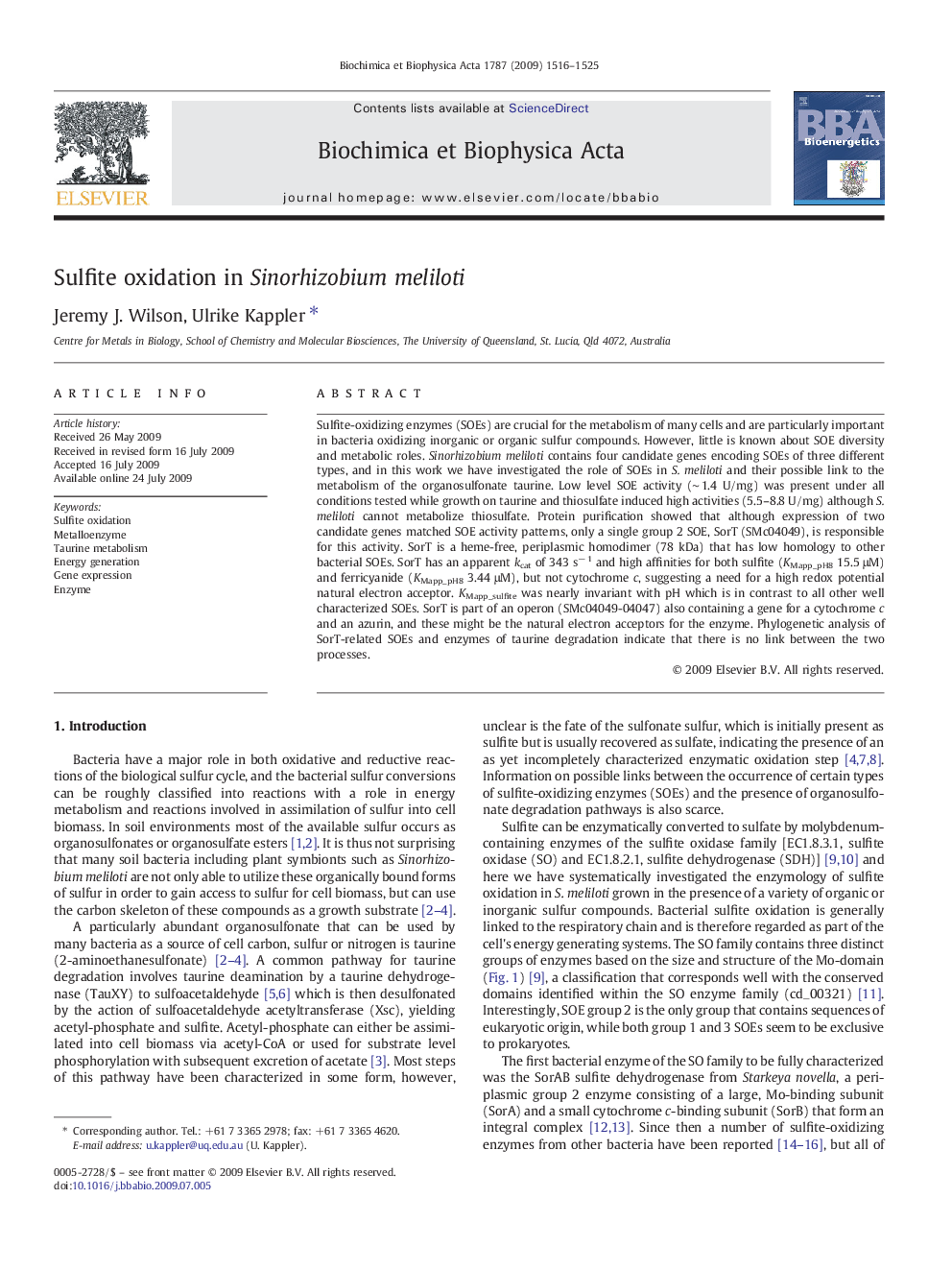| Article ID | Journal | Published Year | Pages | File Type |
|---|---|---|---|---|
| 8299072 | Biochimica et Biophysica Acta (BBA) - Bioenergetics | 2009 | 10 Pages |
Abstract
Sulfite-oxidizing enzymes (SOEs) are crucial for the metabolism of many cells and are particularly important in bacteria oxidizing inorganic or organic sulfur compounds. However, little is known about SOE diversity and metabolic roles. Sinorhizobium meliloti contains four candidate genes encoding SOEs of three different types, and in this work we have investigated the role of SOEs in S. meliloti and their possible link to the metabolism of the organosulfonate taurine. Low level SOE activity (â¼Â 1.4 U/mg) was present under all conditions tested while growth on taurine and thiosulfate induced high activities (5.5-8.8 U/mg) although S. meliloti cannot metabolize thiosulfate. Protein purification showed that although expression of two candidate genes matched SOE activity patterns, only a single group 2 SOE, SorT (SMc04049), is responsible for this activity. SorT is a heme-free, periplasmic homodimer (78 kDa) that has low homology to other bacterial SOEs. SorT has an apparent kcat of 343 sâ 1 and high affinities for both sulfite (KMapp_pH8 15.5 μM) and ferricyanide (KMapp_pH8 3.44 μM), but not cytochrome c, suggesting a need for a high redox potential natural electron acceptor. KMapp_sulfite was nearly invariant with pH which is in contrast to all other well characterized SOEs. SorT is part of an operon (SMc04049-04047) also containing a gene for a cytochrome c and an azurin, and these might be the natural electron acceptors for the enzyme. Phylogenetic analysis of SorT-related SOEs and enzymes of taurine degradation indicate that there is no link between the two processes.
Related Topics
Life Sciences
Agricultural and Biological Sciences
Plant Science
Authors
Jeremy J. Wilson, Ulrike Kappler,
